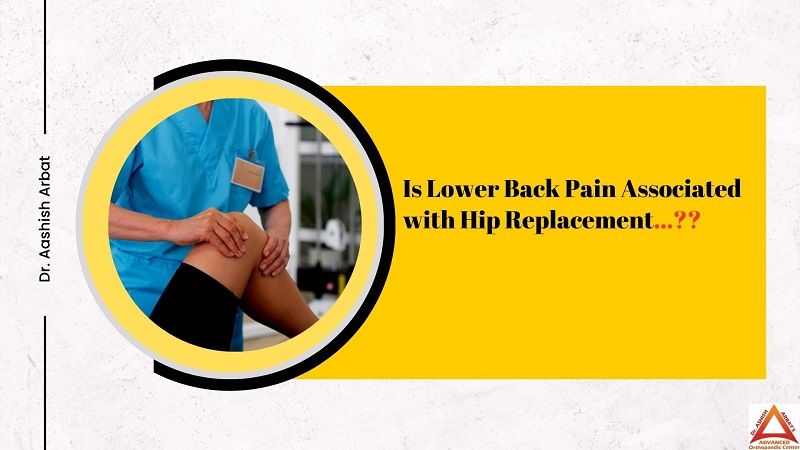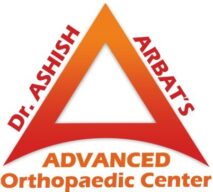
People who have suffered extensive damage to their hip joints often opt for hip replacement surgery to relieve pain & restore mobility. Hip replacement is generally effective in alleviating hip pain, but some patients may experience lower back pain after surgery.
Let’s examine “Is lower back pain associated with hip replacement?” including its origins at different intervals, & effective exercises.
Contents
Is Lower Back Pain Associated with Hip Replacement?
Hip replacement surgery is not directly associated with low back pain. Nevertheless, alterations in the mechanics of the hip joint can result in compensatory changes in the spine, which may cause lower back pain. Several factors contribute to this association, including altered locomotion (gait) patterns, muscle imbalances, & degenerative changes in the spine at different intervals of lower pain.
Different Intervals of Lower Back Pain Following Hip Replacement
- Lower back pain 6 months after hip replacement may result from muscle imbalances, altered gait mechanics, or residual weakness.
- Lower back pain 1 year after hip replacement may be symptomatic of muscle imbalances, poor posture, or persisting weakness.
- Possible causes of lower back pain 2 years after hip replacement include muscle imbalances, degenerative spine alterations, & poor posture.
- Possible causes of persistent low back pain 3 years after hip replacement include muscular imbalances, degenerative changes, & improper posture. Consult with Dr. Aashish Arbat, Hip Replacement Doctor in Pune, to diagnose the reason & design an effective treatment strategy.
Exercises for Lower Back Pain after Hip Replacement
Research found that combining hip exercises with lumbar stabilization exercises reduced low-back pain & impairment in those with chronic low-back pain & lumbar instability better than the traditional treatment. Exercise includes:
- Bird Dog Exercise: Starting on all fours, extend one arm forward while extending the opposite limb backward. Repeat at alternate sides. This practice makes the core more stable & strengthens the lower back muscles.
- Bridge Pose: Lie on your back with your knees bent & feet flat on the floor. Lift your hips off the ground, making a straight line from your knees to your shoulders. This practice works the hips & the muscles in the lower back.
- Cat-Camel Stretch: Place yourself on all fours & arch your back up like a cat, then lower it down like a camel. This practice helps make the spine more flexible & builds core strength.
- Pelvic Tilts: Lie on your back with your knees bent. Gently tilt your hips forward & backward to engage your core muscles. This move helps develop the muscles in the abdomen & lower back.
- Seated Spinal Twist: Sit in a chair with your feet flat on the ground. Twist your body to one side & put your other hand on the outside of your thigh for support. This practice makes the spine more flexible & stretches the muscles in the lower back.
Suffering From Extreme Back Pain After Hip Replacement Surgery… Need Urgent Help??
Lower Back Pain 10 Years After Hip Replacement
Some patients report experiencing lower back pain even a decade after hip replacement surgery, which may seem surprising. This may occur for various reasons. After surgery, a change in gait or body mechanics is one of the most common causes. The body may change how you walk to compensate for the new hip joint, which might strain the lower back.
Another reason could be the normal aging process, which can lead to degenerative changes in the spine that cause lower back pain. It’s also possible that the hip replacement is unconnected to the pain.
Conclusion
Lower back pain after hip replacement is uncommon, although several factors might cause it. Understanding hip replacement & lower back pain is essential for diagnosis & therapy. After hip replacement surgery, following post-operative instructions, exercises, healthy weight maintenance, & maintaining good posture may reduce lower back pain & enhance function.
FAQ
Is it normal to have lower back pain after hip replacement?
Lower back pain after hip replacement is uncommon. Due to post-operative muscle atrophy or altered movement patterns, some patients may experience temporary pain. However, severe or chronic lower back pain should be evaluated to rule out complications or underlying concerns.
What should I do if I experience extreme lower back pain after hip replacement?
Extreme lower back pain after hip replacement is not common & requires immediate medical attention. Symptoms like these may indicate a more severe problem, such as nerve impingement, infection, or implant failure. Identifying & treating the pain’s source requires immediate medical intervention.
Dr. Aashish Arbat – Top Orthopedic Surgeon in Pune
Dr. Aashish Arbat is a prominent Hip Replacement Surgeon in Pune, renowned for his robotic joint replacement surgery expertise. He delivers high-quality therapy to his patients using modern technology & holistic approaches. Dr. Arbat remain commit to up-to-date on the most recent skills & techniques to provide his patients with the best possible outcomes.
Dr. Aashish Arbat, the top orthopedic doctor in Pune, can provide the expert consultation you need to address your specific condition, regardless of whether you are experiencing severe lower back pain or discomfort years after a hip replacement or have other concerns regarding the query of “Is lower back pain associated with hip replacement?” or recovery process.
Suffering From Any Kind of Hip Issues…??
Reference
- https://www.ncbi.nlm.nih.gov/pmc/articles/PMC2853644/
- https://ryortho.com/breaking/82-of-hip-patients-also-experience-lower-back-pain/
- https://pubmed.ncbi.nlm.nih.gov/35304301/
- https://www.ncbi.nlm.nih.gov/pmc/articles/PMC4339134/

